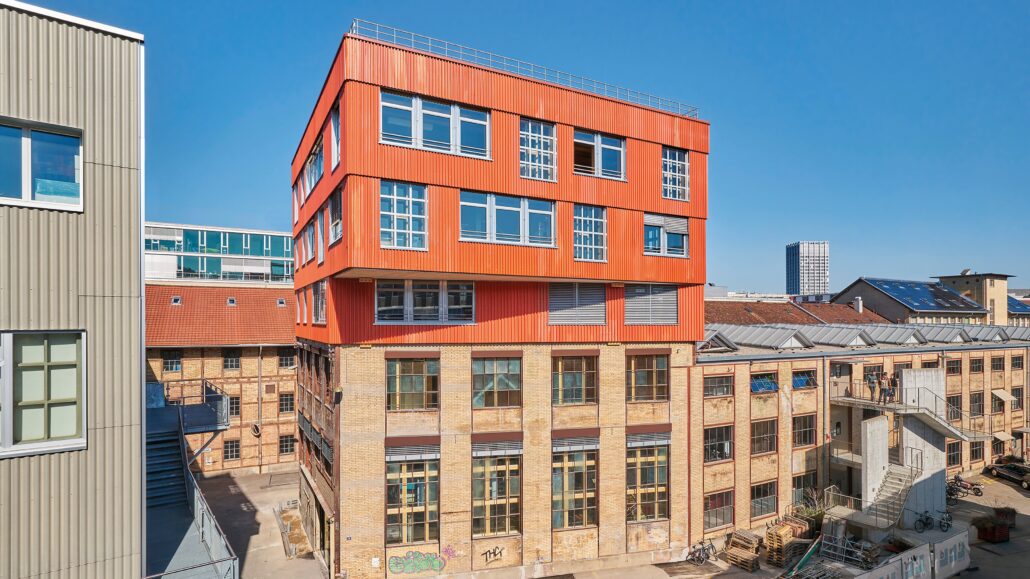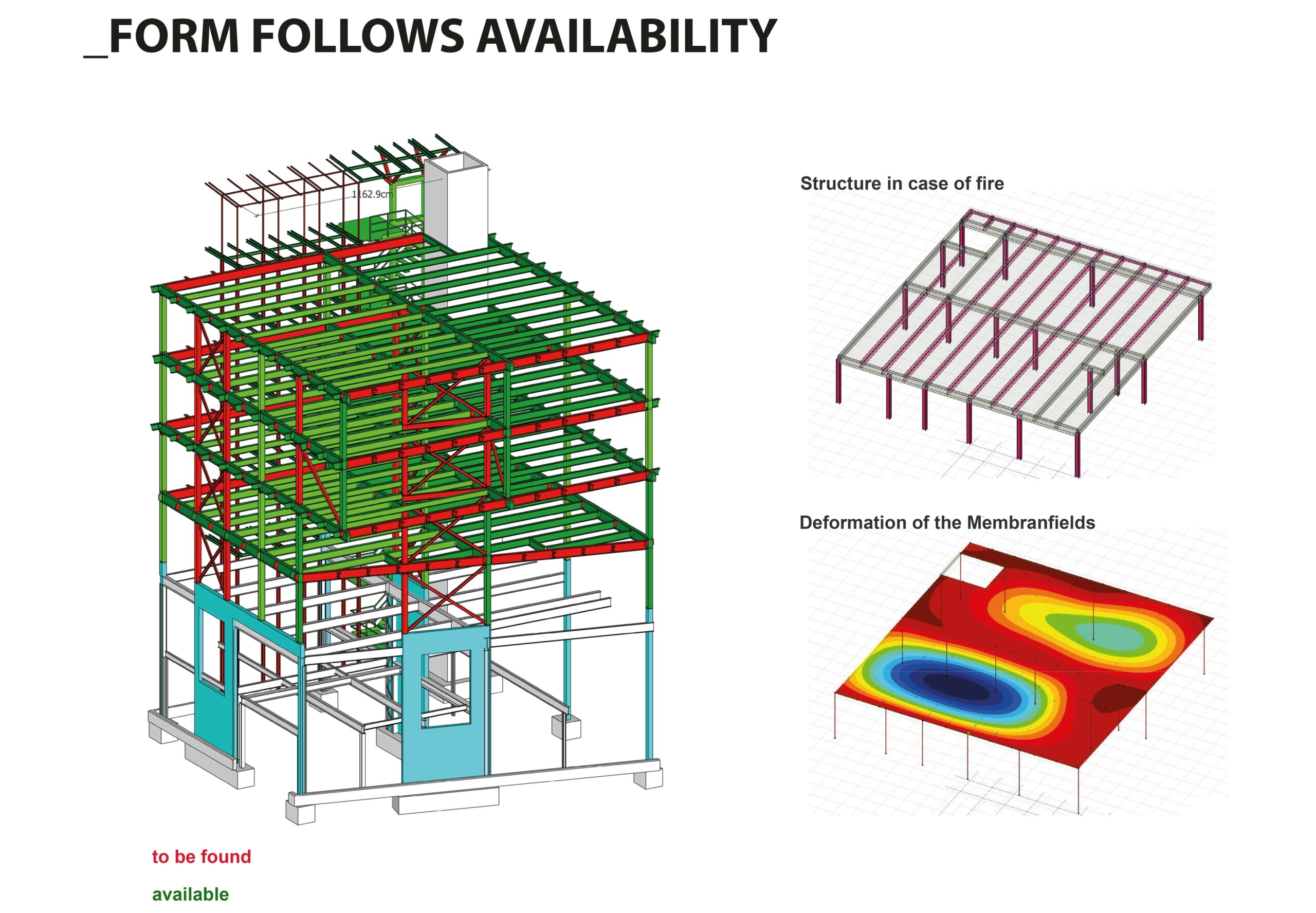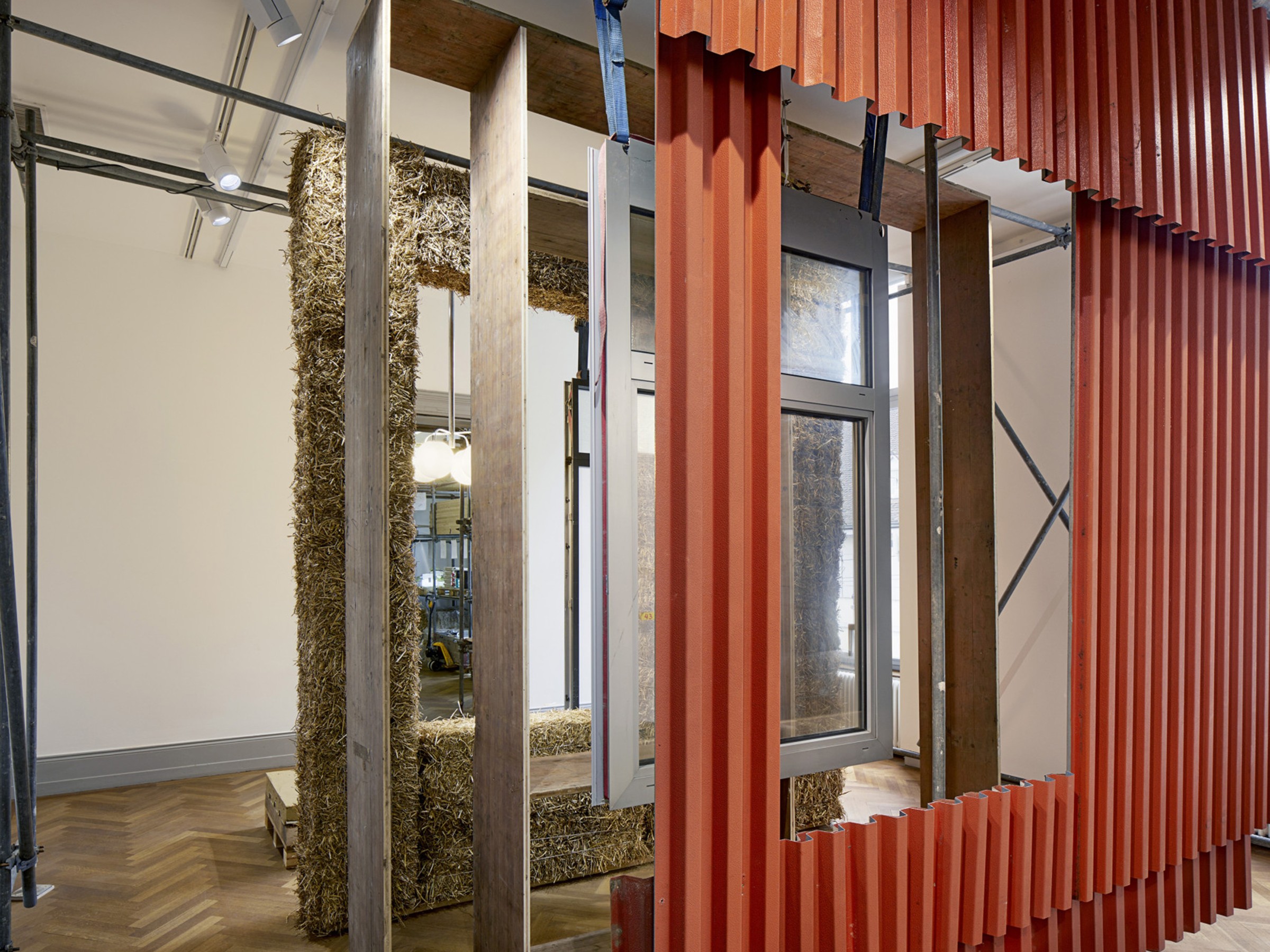The extension of an industrial building in the Swiss city of Winterthur. „Extending the Cycle” project received the Global and the European Prize at the 2021 Holcim Awards – the main global competition for sustainable design.
Excerpt from the report of the regional jury
The project consists of an extension of added floors that are made out of the demolition waste from other construction sites. An industrial building in Winterthur, Switzerland will be repurposed to create a series of 12 units/studios. The design process starts with the collection and classification of building elements sourced from dismantling and demolition operations, and the identification of their potential for recycling.
An external steel staircase, aluminium windows, metal corrugated sheets, roof insulation and photovoltaic modules are all salvaged from previous buildings and given a second life. For example, steel beams are reused for the new structure and old façade stone cladding is redeployed as floor tiles.
Wherever it was not possible to reuse old building elements, the architects opted for natural materials including wood for structural components, straw for the wall insulation, and clay for the interior plaster. The recycling operation and adoption of low-impact materials reduces the embedded carbon footprint by around 60% compared to traditional buildings.
 *Reused building components and their impact in CO2/kg.
*Reused building components and their impact in CO2/kg.
Constructed so as to be easily disassembled in the future, the proposed design allows for further recycling. To maximize energy autonomy, the project considers the integration of solar panel systems on the roof.
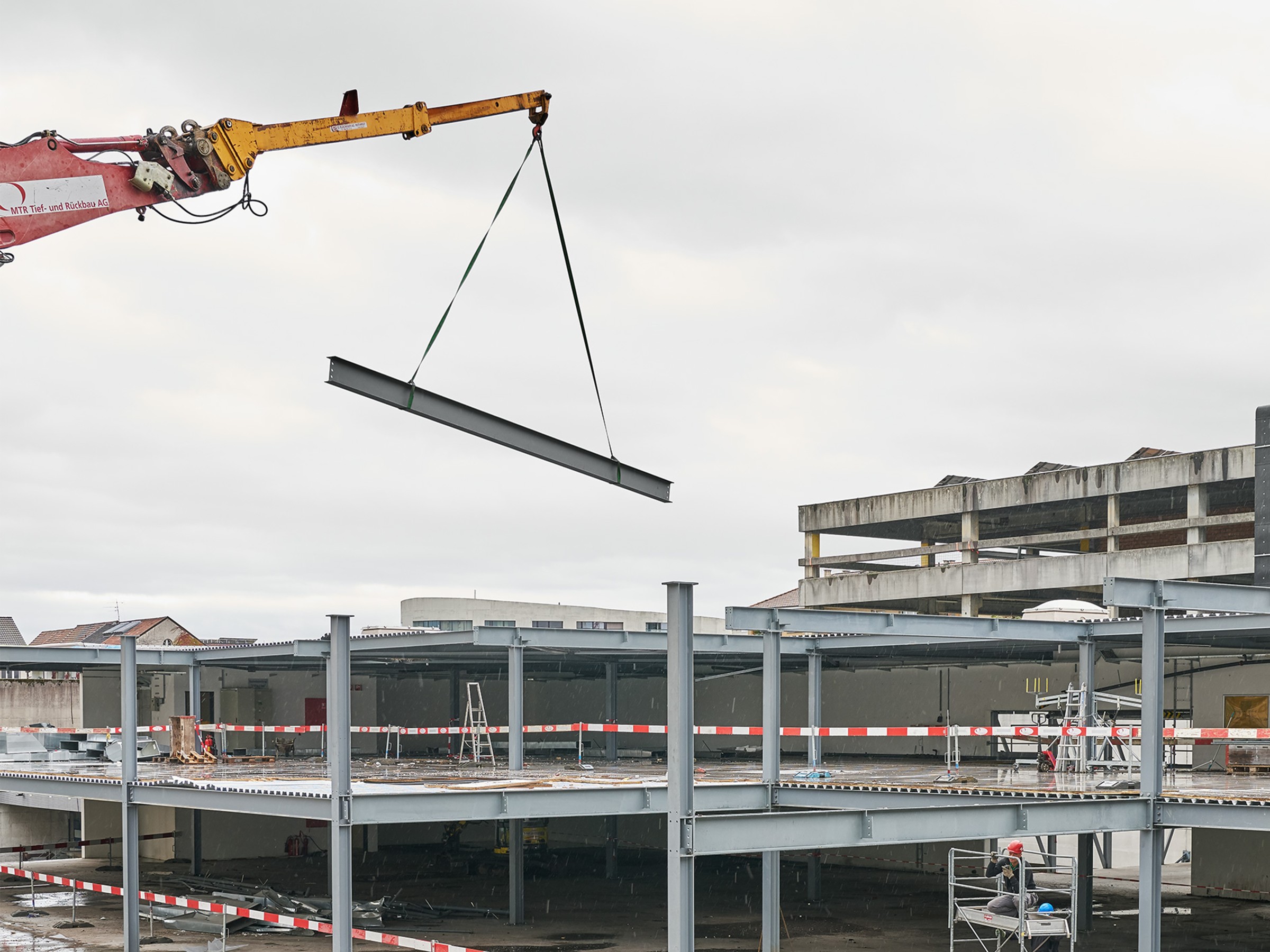 *Deconstructing the steel structure
*Deconstructing the steel structure
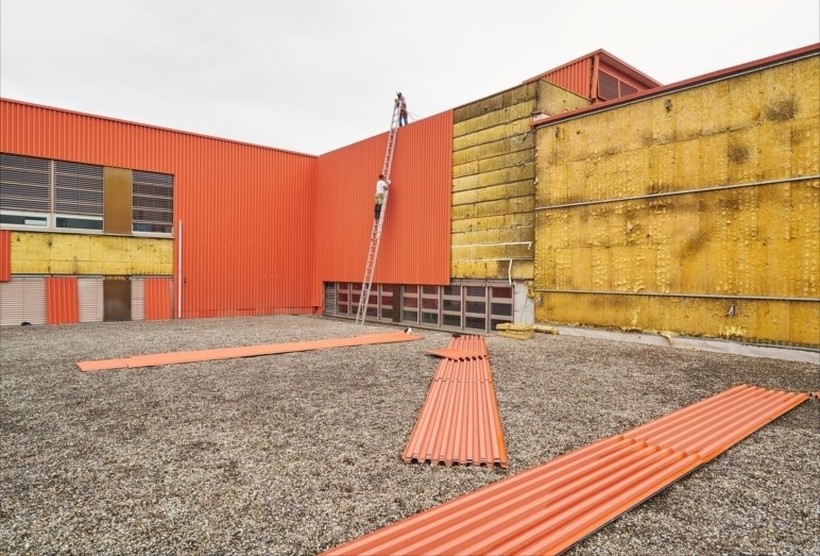 *Deconstructing industrail windows
*Deconstructing industrail windows
 *Deconstructing corrugated aluminium sheets
*Deconstructing corrugated aluminium sheets
The problem of construction is also a problem of demolition – which is especially the case in Europe where space is cleared for new buildings. The project team redefines the starting point of the design process: and turns demolition waste into a construction opportunity. The Holcim Awards jury Europe considered that the project exemplifies a paradigm shift in sustainable construction for its systematic technique that enables the direct re-use of building elements, thereby showing how to dramatically diminish the environmental impact of the construction sector taken as a whole. The revolutionary approach to design is cleverly configured: it uses a very rational analysis of locally available recyclable materials as starting point for the entirety of the project, while still being able to produce original architecture. In this sense, the jury admired the way the project shifts our understanding of aesthetic impact and beauty. The project supports the notion of a circular construction industry, providing a thoughtful sustainable solution also for the post-use phase of the building.
 *Exterior access balcony with granite slabs. The slabs used to be facade cladding. In order to fulfill the necessary slip resistance required for a floor, the slabs were turned upside down.
*Exterior access balcony with granite slabs. The slabs used to be facade cladding. In order to fulfill the necessary slip resistance required for a floor, the slabs were turned upside down.
Global jury appraisal
The jury highly commended this project for the disruptive construction methodology it proposes to achieve carbon neutral buildings and enable circular economy models in the field of design and construction. Energy savings are achieved on three levels: demolition is minimized in favour of adding new elements to refurbish an existing fabric; construction material mainly consists of reused components; when new materials are needed, the project opts for low carbon or carbon negative ones. In contexts like Switzerland where demolition is still a rather frequent practice that precedes new construction, this project shows how much potential exists – and is lost – in buildings that are torn down, to the point that dismantled elements are reused as brand-new components for new construction. The ability of the building to be easily assembled and disassembled to allow for future modifications and reuse was also highly commended by the jury and recognized as a quality towards which the building industry should increasingly aim.
 *The project’s solutions are specific to the country’s construction industry. Once people decide to take action, the solutions depend on the economical set up of the country and the local availability of materials, labor force, production lines etc.
*The project’s solutions are specific to the country’s construction industry. Once people decide to take action, the solutions depend on the economical set up of the country and the local availability of materials, labor force, production lines etc.
Info & credits
Architecture: baubüro in situ, Basel – Marc Angst, Michèle Brand, Barbara Buser, Pascal Hentschel, Benjamin Poignon, Kerstin Mülle.
*Article published with the support of Lafarge-Holcim Romania
holcimfoundation.org

